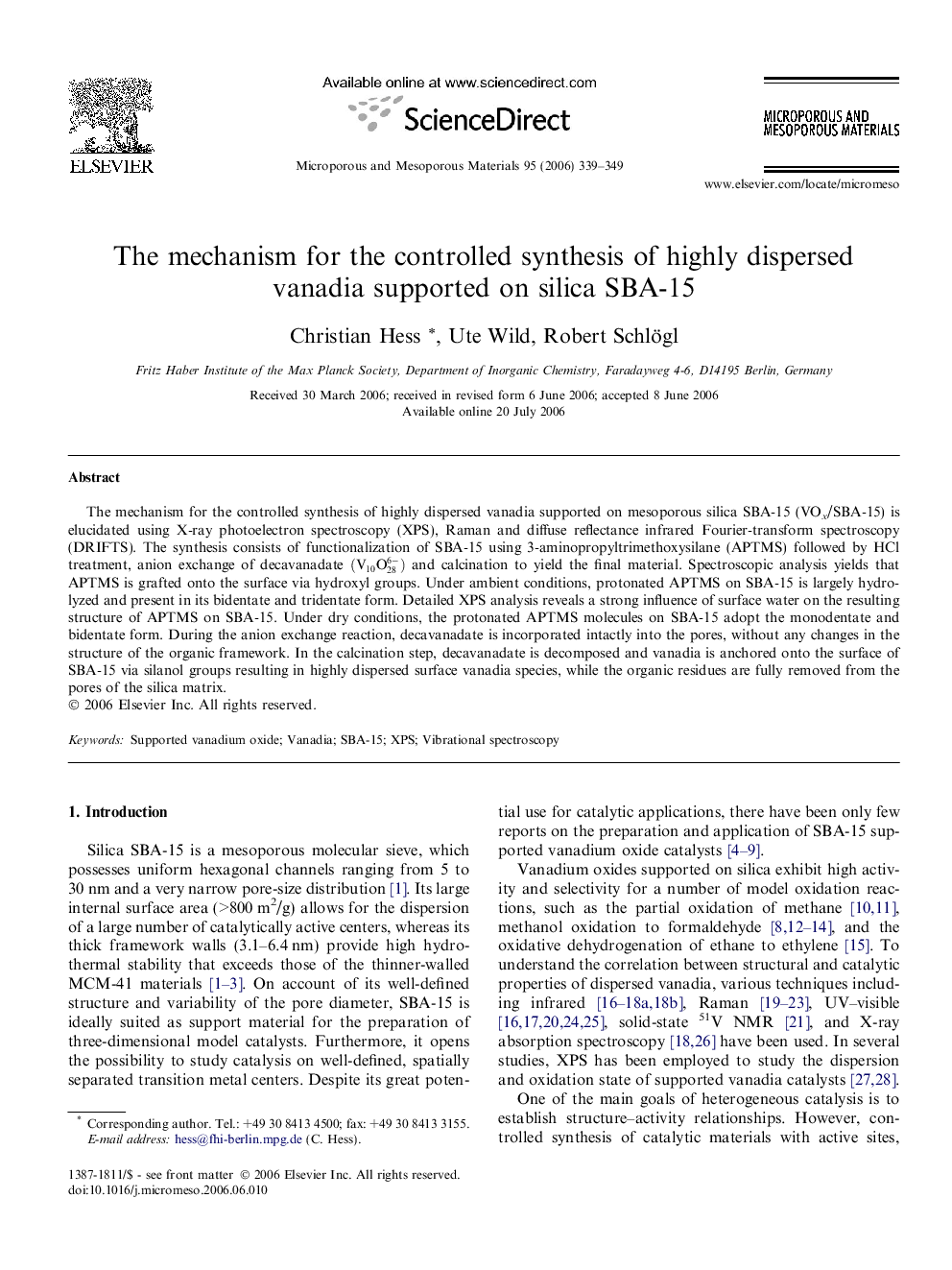| Article ID | Journal | Published Year | Pages | File Type |
|---|---|---|---|---|
| 77041 | Microporous and Mesoporous Materials | 2006 | 11 Pages |
The mechanism for the controlled synthesis of highly dispersed vanadia supported on mesoporous silica SBA-15 (VOx/SBA-15) is elucidated using X-ray photoelectron spectroscopy (XPS), Raman and diffuse reflectance infrared Fourier-transform spectroscopy (DRIFTS). The synthesis consists of functionalization of SBA-15 using 3-aminopropyltrimethoxysilane (APTMS) followed by HCl treatment, anion exchange of decavanadate (V10O286-) and calcination to yield the final material. Spectroscopic analysis yields that APTMS is grafted onto the surface via hydroxyl groups. Under ambient conditions, protonated APTMS on SBA-15 is largely hydrolyzed and present in its bidentate and tridentate form. Detailed XPS analysis reveals a strong influence of surface water on the resulting structure of APTMS on SBA-15. Under dry conditions, the protonated APTMS molecules on SBA-15 adopt the monodentate and bidentate form. During the anion exchange reaction, decavanadate is incorporated intactly into the pores, without any changes in the structure of the organic framework. In the calcination step, decavanadate is decomposed and vanadia is anchored onto the surface of SBA-15 via silanol groups resulting in highly dispersed surface vanadia species, while the organic residues are fully removed from the pores of the silica matrix.
